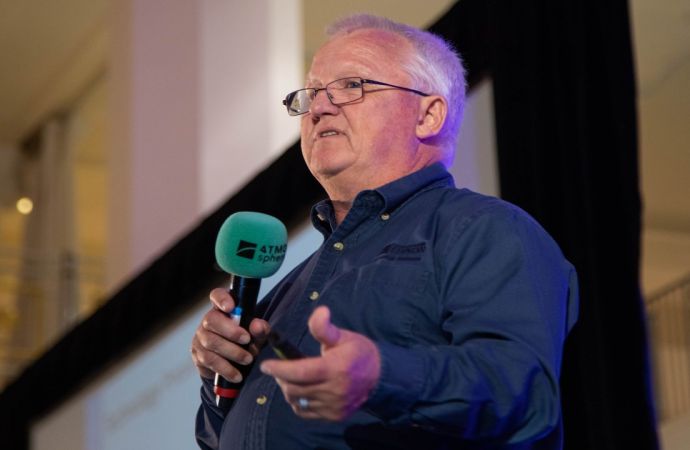The draft Short-Lived Climate Pollutant Reduction Strategy, published 30 September, is now open for the public assessment. The California Air Resources Board (ARB) invites all relevant stakeholders, experts and other interested parties to submit their comments.

California has long been a leading U.S. state to reduce short-lived climate pollutants (SLCPs), including HFCs. California legislation requires ARB to create a comprehensive strategy to decrease the SLCP emissions in California and present it to the Board for consideration in spring 2016.
Set of measures to decrease fluorinated gas emissions
California strongly supports the reduction of fluorinated gases at a national and global level. Thus, the draft strategy puts forward possible new measures that aim to reduce emissions of fluorinated gases in California by 40 percent before 2030. This signifies a very realistic pathway for California to get eliminate fluorinated gases in the next fifteen years.
The strategy positions that “depending upon the outcome of the November 2015 Montreal Protocol meeting and stringency of the phasedown, if adopted, ARB may pursue a California HFC phasedown schedule that will meet the state GHG emission reduction goals”.
ARB’s strategy considers developing bans and prohibitions on the use of high GWP refrigerants in applications where alternatives are available. Additionally, the state will consider new incentive programs and phase down of HFC refrigerant supplies.
Incentive programs and phase down of HFCs
The strategy indicates two main obstacles to more widespread adoption of low GWP refrigerants:
Prohibition of sales of new refrigerant with very high GWPs
The draft strategy considers a measure to prohibit the sale or distribution of very high GWP refrigerants, with the exemption of refrigerants that are reclaimed or recycled. In addition, California will develop maximum allowable GWP levels after conducting supplementary research and consulting with relevant stakeholders.
Already this July, the U.S. Environmental Protection Agency adopted a ban on refrigerants with a GWP of 2500 and higher in new and retrofitted refrigeration installations in retail food installations, which will come into effect in the second half of 2016.
Prohibitions in new stationary air-conditioning and refrigeration equipment
With this measure in place, ARB is aiming to forbid the use of high GWP refrigerants in new commercial, industrial and residential stationary refrigeration and air-conditioning technology.
A ban on the use of high GWP refrigerants, such as HFCs, in new equipment would oblige manufacturers to sell only low GWP refrigerant technology in California. The strategy also states that most of the U.S. manufacturers do business at a global level and have already made plans to change their production to lower GWP alternatives in order to comply with the revised European Union F-Gas Regulation, which came into effect this year. Therefore, ARB reasons that this ban would not be an extra burden for the companies that already comply with the European legislation.
The strategy indicates that in the U.S. ammonia is already widely used in food storage and processing sectors. In addition to this, more than one hundred stores use CO2 in their refrigeration equipment in the U.S. In climates with higher ambient temperatures, other refrigerant solutions might be considered.
Next steps
The deadline for stakeholders to submit comments is 30 October at 5pm, PST.
As a next step, the draft strategy will be discussed at a public workshop organised by ARB in October, and later this year, the responses received from stakeholders will be reviewed by ARB.
Set of measures to decrease fluorinated gas emissions
California strongly supports the reduction of fluorinated gases at a national and global level. Thus, the draft strategy puts forward possible new measures that aim to reduce emissions of fluorinated gases in California by 40 percent before 2030. This signifies a very realistic pathway for California to get eliminate fluorinated gases in the next fifteen years.
The strategy positions that “depending upon the outcome of the November 2015 Montreal Protocol meeting and stringency of the phasedown, if adopted, ARB may pursue a California HFC phasedown schedule that will meet the state GHG emission reduction goals”.
ARB’s strategy considers developing bans and prohibitions on the use of high GWP refrigerants in applications where alternatives are available. Additionally, the state will consider new incentive programs and phase down of HFC refrigerant supplies.
Incentive programs and phase down of HFCs
The strategy indicates two main obstacles to more widespread adoption of low GWP refrigerants:
- Potential higher up-front costs
- Lack of familiarity with low-GWP refrigerants
Prohibition of sales of new refrigerant with very high GWPs
The draft strategy considers a measure to prohibit the sale or distribution of very high GWP refrigerants, with the exemption of refrigerants that are reclaimed or recycled. In addition, California will develop maximum allowable GWP levels after conducting supplementary research and consulting with relevant stakeholders.
Already this July, the U.S. Environmental Protection Agency adopted a ban on refrigerants with a GWP of 2500 and higher in new and retrofitted refrigeration installations in retail food installations, which will come into effect in the second half of 2016.
Prohibitions in new stationary air-conditioning and refrigeration equipment
With this measure in place, ARB is aiming to forbid the use of high GWP refrigerants in new commercial, industrial and residential stationary refrigeration and air-conditioning technology.
A ban on the use of high GWP refrigerants, such as HFCs, in new equipment would oblige manufacturers to sell only low GWP refrigerant technology in California. The strategy also states that most of the U.S. manufacturers do business at a global level and have already made plans to change their production to lower GWP alternatives in order to comply with the revised European Union F-Gas Regulation, which came into effect this year. Therefore, ARB reasons that this ban would not be an extra burden for the companies that already comply with the European legislation.
The strategy indicates that in the U.S. ammonia is already widely used in food storage and processing sectors. In addition to this, more than one hundred stores use CO2 in their refrigeration equipment in the U.S. In climates with higher ambient temperatures, other refrigerant solutions might be considered.
Next steps
The deadline for stakeholders to submit comments is 30 October at 5pm, PST.
As a next step, the draft strategy will be discussed at a public workshop organised by ARB in October, and later this year, the responses received from stakeholders will be reviewed by ARB.
MORE INFORMATION
Related stories



